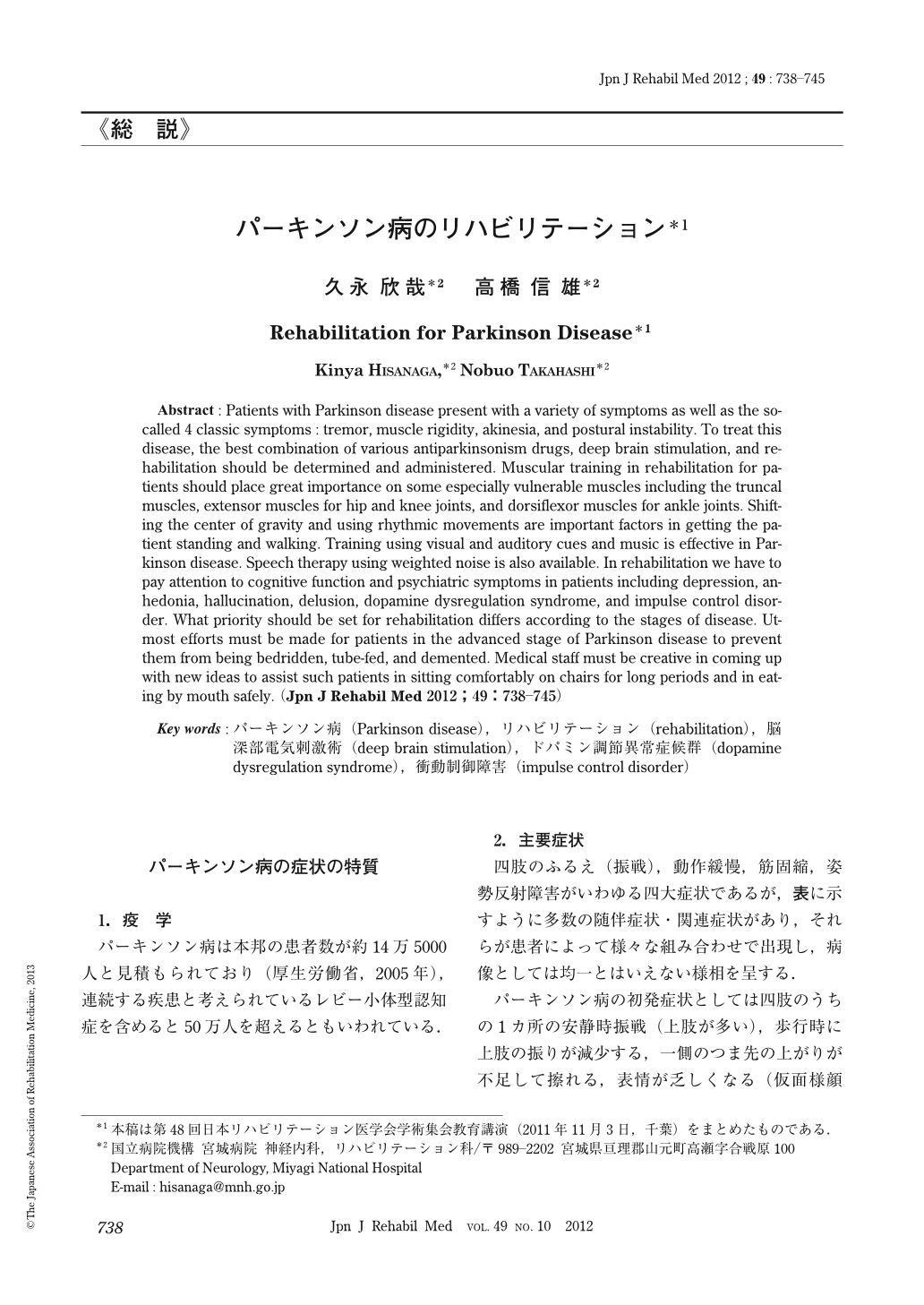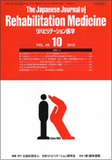Japanese
English
- 販売していません
- Abstract 文献概要
- 1ページ目 Look Inside
- 参考文献 Reference
パーキンソン病の症状の特質
1.疫学
パーキンソン病は本邦の患者数が約14万5000人と見積もられており(厚生労働省,2005年),連続する疾患と考えられているレビー小体型認知症を含めると50万人を超えるともいわれている.
Abstract : Patients with Parkinson disease present with a variety of symptoms as well as the so-called 4 classic symptoms : tremor, muscle rigidity, akinesia, and postural instability. To treat this disease, the best combination of various antiparkinsonism drugs, deep brain stimulation, and rehabilitation should be determined and administered. Muscular training in rehabilitation for patients should place great importance on some especially vulnerable muscles including the truncal muscles, extensor muscles for hip and knee joints, and dorsiflexor muscles for ankle joints. Shifting the center of gravity and using rhythmic movements are important factors in getting the patient standing and walking. Training using visual and auditory cues and music is effective in Parkinson disease. Speech therapy using weighted noise is also available. In rehabilitation we have to pay attention to cognitive function and psychiatric symptoms in patients including depression, anhedonia, hallucination, delusion, dopamine dysregulation syndrome, and impulse control disorder. What priority should be set for rehabilitation differs according to the stages of disease. Utmost efforts must be made for patients in the advanced stage of Parkinson disease to prevent them from being bedridden, tube-fed, and demented. Medical staff must be creative in coming up with new ideas to assist such patients in sitting comfortably on chairs for long periods and in eating by mouth safely.

Copyright © 2012, The Japanese Association of Rehabilitation Medicine. All rights reserved.


